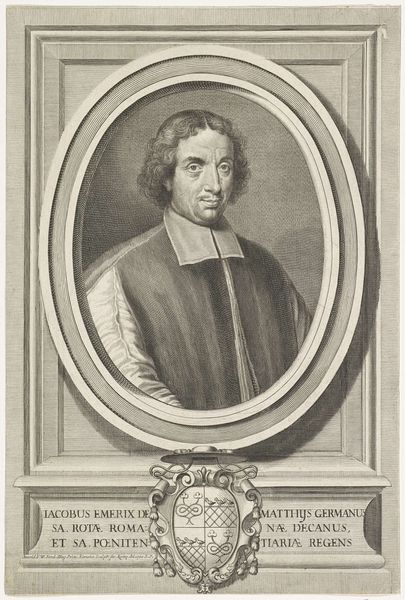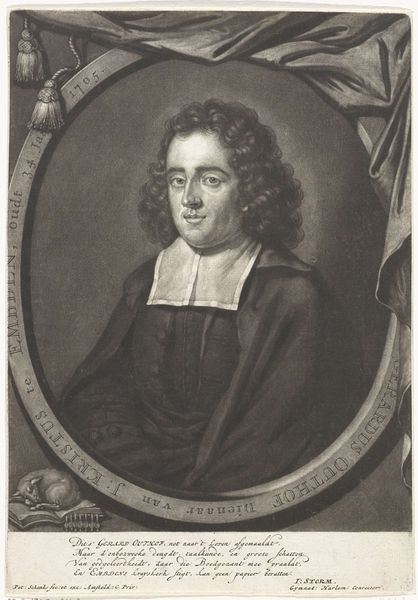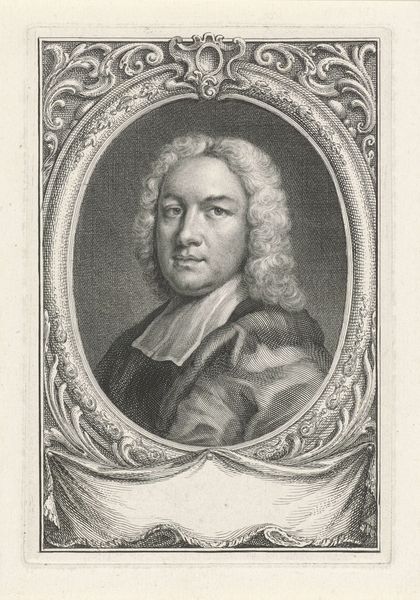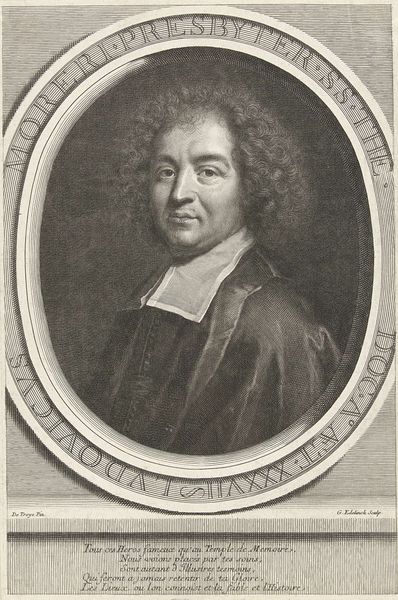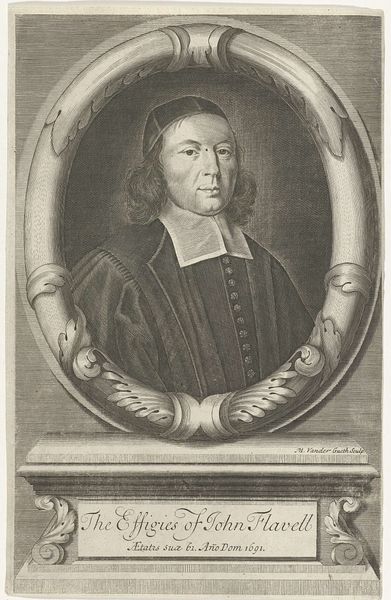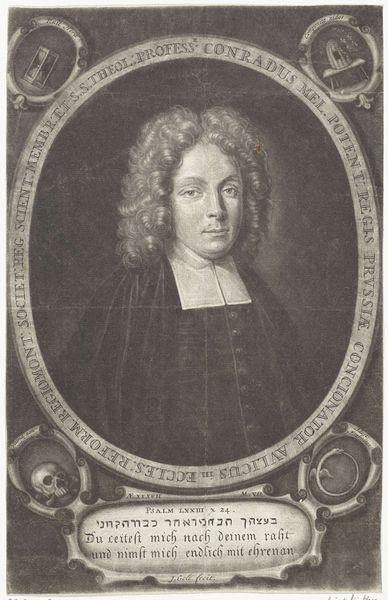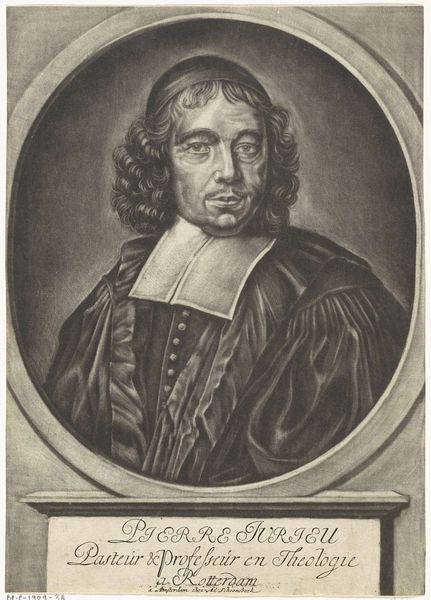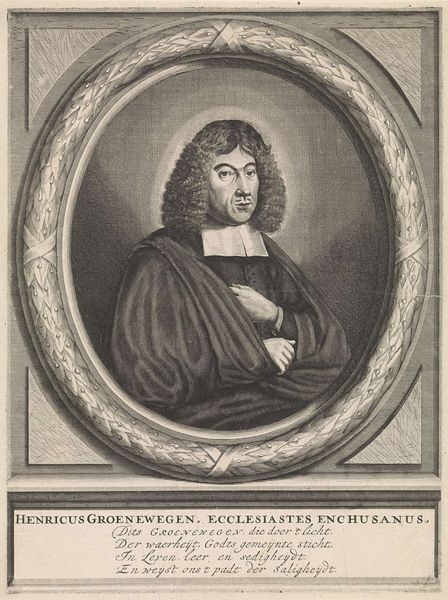
engraving
#
portrait
#
baroque
#
old engraving style
#
figuration
#
portrait reference
#
line
#
academic-art
#
engraving
Dimensions: height 207 mm, width 155 mm
Copyright: Rijks Museum: Open Domain
Curator: Here we have Pieter van Schuppen’s “Portret van Jean Verjus” from 1663, housed right here at the Rijksmuseum. It's an engraving. Editor: My first impression is one of incredible precision, almost austere, but that's balanced by a sense of contained warmth within the subject's expression. The intricate detail practically begs for closer inspection. Curator: Engravings like this served a powerful purpose. They were relatively inexpensive ways to disseminate someone’s image—in this case, Doctor Theolog. These prints facilitated the spread of ideals associated with him, almost like visual memes. Editor: Note the laurel wreath that surrounds Verjus, a classical element that speaks to victory and accomplishment. Its careful, repetitive rendering forms a powerful contrast with the naturalistic depiction of his face. There's tension in that juxtaposition. Curator: Indeed. The laurel signifies more than mere worldly achievement, particularly within the frame. We see a globe and a candle, classic symbols alluding to his intellectual pursuits, the spread of knowledge and enlightenment through his work. The candle could also allude to mortality. Editor: The stark contrast between the black lines and the white paper forces the eye to navigate the details methodically. Consider how light is articulated—or rather, implied—by the density and direction of these lines. Van Schuppen uses line variation like a painter uses tone! Curator: Van Schuppen does indeed create an intriguing narrative here. There’s the dedication along the bottom stating Verjus’s age upon his death as thirty-three, invoking deliberate connections to Christian iconography. Verjus's intellectual and religious influence cemented by this portrayal. Editor: Thinking about it formally, the use of linear patterns allows the creation of a complex representation of reality through the careful selection of form; this provides symbolic access and a sense of enduring clarity. It transcends simple illustration. Curator: The choice of engraving itself cements his image in permanence, accessible beyond his immediate sphere, reminding us how images of power work. Editor: A testament to technical skill meeting intellectual ambition, truly. Curator: It has certainly given me cause for reflection.
Comments
No comments
Be the first to comment and join the conversation on the ultimate creative platform.
